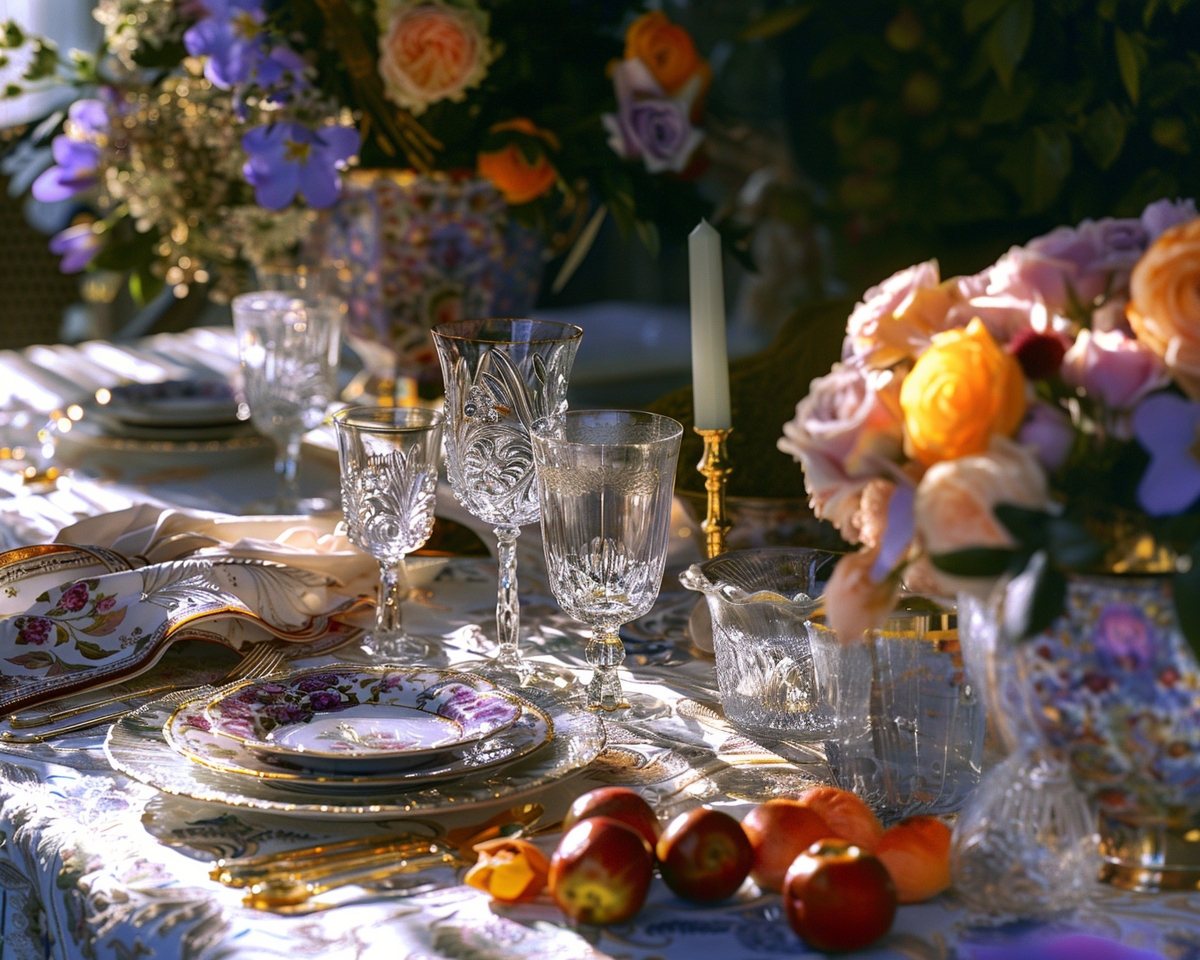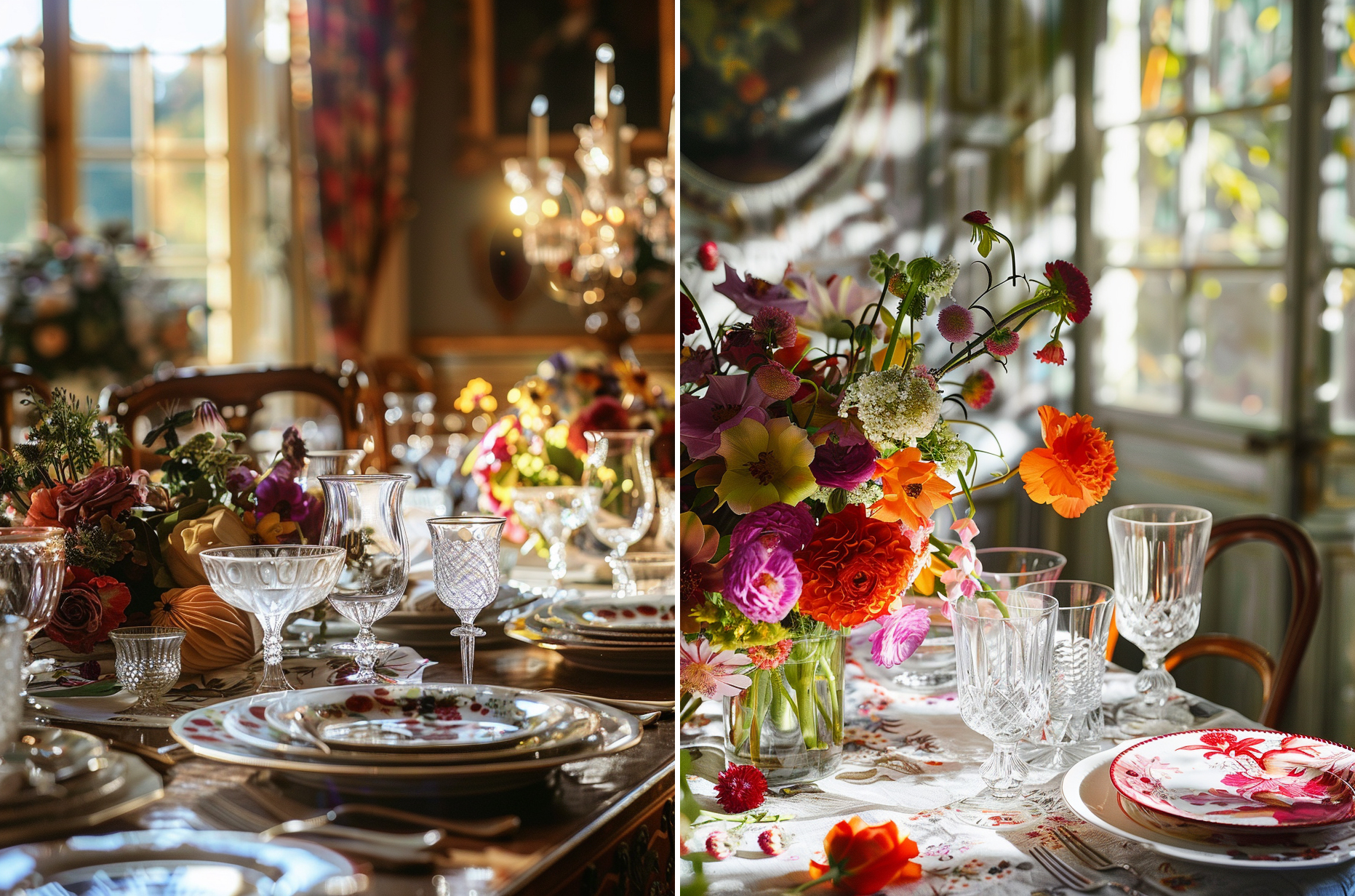The European Art of Table Setting: Creating an Elegant Space for Connection and Relaxation

In a world where meals are often rushed, eaten in front of screens, or squeezed between obligations, Europeans hold onto something sacred: the art of the table. More than just a place to eat, the table is a space for connection, conversation, and unhurried togetherness.
This tradition doesn’t require perfection or formality every day, but it does ask for intention. Once a week, or whenever possible, setting a table with care transforms a meal into a moment—one that invites loved ones to slow down, enjoy, and linger.
The Table as a Gathering Place
In many European homes, the table is the heart of the household. It’s where Sunday lunches stretch into the afternoon, where birthdays are celebrated with laughter and wine, and where children listen to the stories of their grandparents. Whether set in a grand dining room, a cozy kitchen, or a simple garden, the table is an invitation—to be present, to connect, to take a break from the outside world.
Embracing the Beauty of Imperfection
The European approach to table setting isn’t about matching sets or perfectly symmetrical arrangements. Instead, it embraces the beauty of mixing and matching—combining things that don’t traditionally belong together to create something uniquely beautiful.
- Plates don’t have to match. A vintage floral plate can sit next to a modern ceramic one, and no one will bat an eye. The contrast adds character.
- Glassware can be eclectic. A tall wine glass next to a delicate coupe or a textured water glass creates visual interest.
- Table linens can be casual. A linen tablecloth with natural wrinkles, mismatched napkins, or even a table runner made from a folded scarf—anything works as long as it feels inviting.
- Centerpieces should feel effortless. A small cluster of fresh herbs, a bowl of citrus, a few candlesticks, or a scattering of dried flowers—there are no rules, only what feels warm and natural.
The goal is to create an atmosphere where people feel welcomed, not intimidated. The table should tell a story—one of spontaneity, warmth, and effortless charm.
The Ritual of Slowing Down
Beyond aesthetics, the true essence of a European-style meal is the ritual of slowing down. Once a week, families and friends sit down together, phones are put away, and time is allowed to stretch.
- In Italy, Sunday lunch is a cherished affair, lasting for hours with multiple courses, laughter, and storytelling.
- In France, even a simple dinner is followed by a cheese course and lingering conversation over wine.
- In Spain, sobremesa—the time spent at the table after a meal—is just as important as the meal itself.
There is no rush. The meal flows naturally, extending into a second glass of wine, an extra serving of dessert, or just a moment of silence before clearing the table. The act of dining is not just about eating—it’s about savoring the company of those around you.
Bringing the Tradition Home
You don’t need a grand European estate to embrace this tradition. A European-style meal is about prioritizing connection over convenience.
- Light a few candles, even on a weeknight.
- Use the nice plates, even if the meal is simple.
- Let the table evolve—mix and match, layer colors and textures, embrace imperfection.
- Most importantly, make space for conversation. Let the meal unfold slowly, without the pressure to rush or clear the table too soon.
In the end, the art of table setting is not about formality, but about making space for the things that truly matter. When the table is set with care, and when the people around it feel at home, the meal becomes more than just food—it becomes a moment to be cherished.
Because the most beautiful tables are not the most perfect ones—they are the ones filled with laughter, good conversation, and the warmth of shared time.



